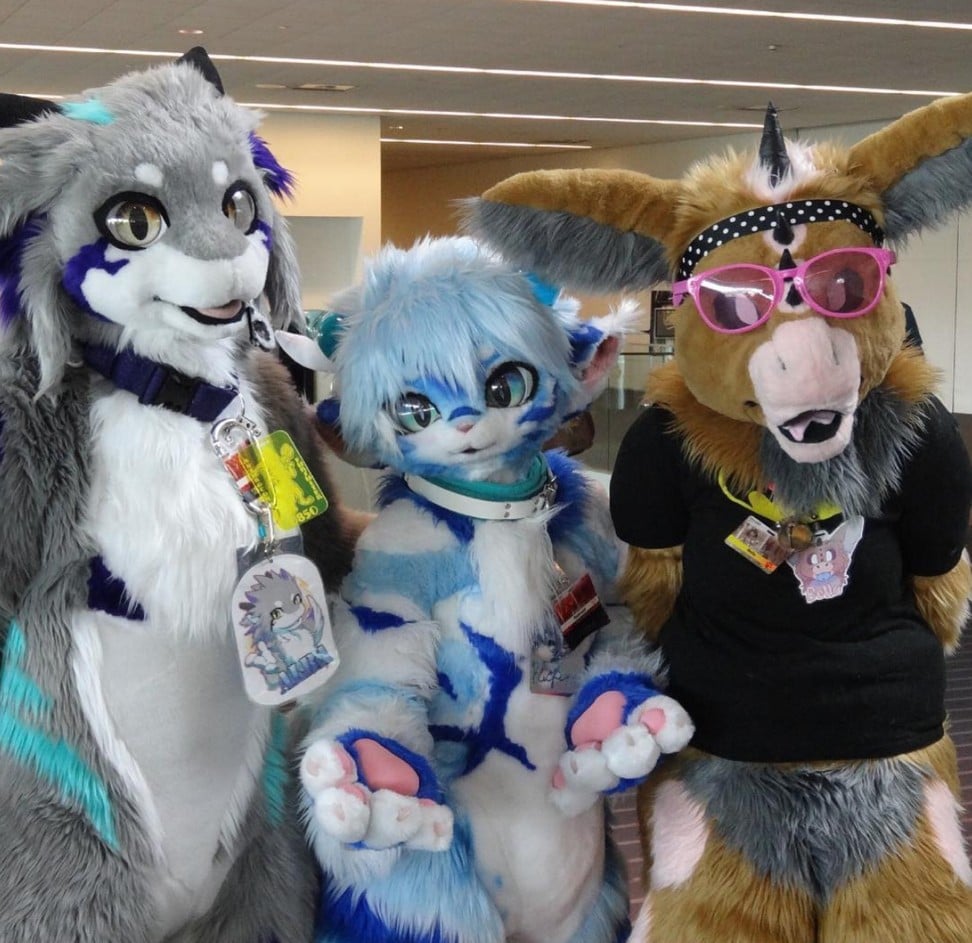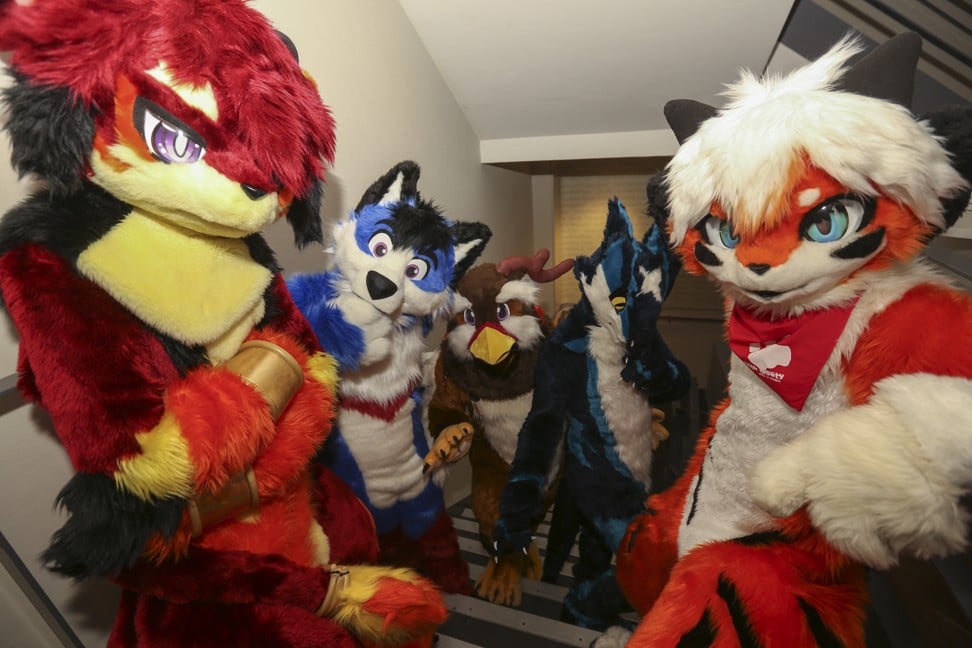Unveiling The Chinese Furry Fandom: A Unique Subculture
Is there a vibrant subculture thriving in China, one that uniquely blends age-old traditions with a global phenomenon? Absolutely. The Chinese furry community is rapidly emerging as a dynamic force, reshaping the landscape of the international furry fandom with its distinctive cultural flair.
The furry fandom, a global tapestry woven with threads of creativity, imagination, and a shared love for anthropomorphic animals, has found fertile ground in China. This subculture has not simply replicated its Western counterparts; it has evolved, infused with the rich tapestry of Chinese history, the pulse of modern digital platforms, and an evolving societal acceptance of diverse passions. This exploration dives into the heart of the Chinese furry community, examining its origins, characteristics, and the contributions it makes to the broader furry movement.
For those already immersed in the furry world, and for those simply curious, this exploration offers valuable insights. By delving into the Chinese furry community, we can further appreciate the diversity and creative richness that defines the global furry fandom.
- Mens Cowboy Boots Style Fit Brands Guide
- Maplestar Fern Stark The Rising Stars Journey Amp Success Story
| Key Aspect | Details |
|---|---|
| Name | Chinese Furry Community |
| Main Interest | Anthropomorphic animals, art, literature, role-playing, and creative self-expression. |
| Cultural Influence | Traditional Chinese elements, mythology, folklore, and art styles (e.g., ink painting, calligraphy). |
| Popular Platforms | Bilibili, Weibo, Xiaohongshu |
| Notable Events | Shanghai Furry Expo, Beijing Furry Gathering, Guangzhou Furry Festival |
| Estimated Members | Thousands of active members (growing rapidly). |
| Core Values | Creativity, self-expression, inclusivity, and community. |
| Challenges | Societal stigma, lack of mainstream recognition, geopolitical restrictions. |
| Future Outlook | Continued growth, increased diversity, greater global impact. |
| Reference Website | Chinese Furry Association |
The genesis of the furry fandom in China, while recent, is a story of digital discovery and adaptation. The early 2000s witnessed the first tentative steps, as the expanding reach of the internet brought Chinese enthusiasts into contact with the burgeoning Western furry communities through online forums and social media. At the outset, this nascent community was small, geographically dispersed, and largely reliant on international content. The challenge was to build connections, to find a shared space within a vastly different cultural landscape.
By the mid-2010s, the narrative shifted. The emergence of domestic online platforms like Bilibili and Weibo proved pivotal. These platforms offered dedicated spaces for furries to exhibit their artwork, share stories, and forge bonds. This in turn fostered a tangible sense of belonging and identity. Today, the Chinese furry fandom stands as one of the most rapidly expanding subcultures in the nation, comprised of thousands of active members who contribute to its vibrant ecosystem. This growth has been remarkable, transforming what was once a niche interest into a significant cultural presence.
Key Milestones:
- Honey Pine Makeup Your Guide To Natural Beauty Skincare
- Dubai Toilet Video Viral Sensation Controversies Impact
- 2005: The first stirrings of localized community, as early online furry groups begin to form on Chinese forums.
- 2010: The popularity of anime and manga, with their frequent use of anthropomorphic characters, provides a key boost in awareness and interest.
- 2015: The establishment of dedicated furry communities on platforms like Bilibili and Weibo, offering centralized hubs for furries to engage and share.
- 2020: The emergence of official furry conventions in major Chinese cities marks a significant turning point, signalling growing acceptance and influence.
The Chinese furry community is a diverse and inclusive space, built on a shared love of anthropomorphic art, creative expression, and imaginative storytelling. While drawing influence from Western furry culture, the community has skillfully crafted its unique identity by weaving in traditional Chinese elements into its practices and artistic creations.
Demographics provide insight into the communitys composition. A 2022 survey, conducted by the Chinese Furry Association, revealed that the majority of participants are between 18 and 30 years of age, with a slight male skew. Many are students or young professionals, attracted by the emphasis on creativity and self-expression. The survey also underscored the cross-pollination with other popular culture, highlighting that a significant number of Chinese furries are also avid fans of anime, manga, and related forms of media, further enriching the cultural tapestry of the community.
Chinese furries consistently draw upon the wellspring of traditional Chinese culture, infusing their art and personal representations with elements such as mythical creatures, folklore, and symbolic motifs. Many create anthropomorphic representations of iconic beings like dragons, phoenixes, and the qilin, skillfully blending these with modern furry aesthetics. This fusion not only distinguishes their work but also honors their heritage.
Moreover, traditional Chinese art styles, including ink painting and calligraphy, are frequently integrated into their creations. This blend of age-old techniques with contemporary artistic styles gives rise to a distinctive visual language that sets the Chinese furry community apart. This showcases the community's rich cultural inheritance and its innovative spirit. The adoption of these techniques lends an authenticity and depth to the art, connecting it to a deeper cultural context.
Digital platforms are indispensable to the growth and evolution of the Chinese furry community. Websites like Bilibili, Weibo, and Xiaohongshu have evolved into critical hubs, enabling furries to connect, share their creations, and participate in collaborative projects. These digital spaces offer safe and supportive environments where members can express themselves freely and engage with others who share their passions. The anonymity and accessibility provided by these platforms have been crucial in fostering community and enabling creative exploration.
Popular Platforms for Chinese Furries:
- Bilibili: A leading video-sharing platform where furries upload animations, music videos, and live streams, creating a vibrant online community. This platform offers a multimedia space, enabling the creation and dissemination of various content formats.
- Weibo: A microblogging site where furries share updates, artwork, and event information, helping build and maintain connections within the community. It provides a social hub for communication and information dissemination.
- Xiaohongshu: A lifestyle-sharing app where furries post tutorials, cosplay photos, and fursona designs, offering a space for creative expression and collaboration. It is a platform to showcase individual styles and share insights.
Furry conventions and events have gained significant popularity in China in recent years, providing fans with opportunities to meet in person and celebrate their shared interests. These events commonly feature art exhibitions, costume contests, panel discussions, and interactive workshops, providing a comprehensive and engaging experience for attendees. These gatherings are crucial for building community and providing face-to-face interaction, solidifying the bonds formed online.
Notable Furry Events in China:
- Shanghai Furry Expo: One of Chinas largest furry conventions, held annually in Shanghai, drawing attendees from across the country and beyond. This event has become a central gathering point for the community, growing in size and scope each year.
- Beijing Furry Gathering: A smaller, community-driven event that focuses on art, music, and cultural exchange, fostering a close-knit and supportive atmosphere. It provides a more intimate setting for connection and artistic collaboration.
- Guangzhou Furry Festival: A family-friendly event that promotes furry culture and education, encouraging broader societal acceptance and understanding of the fandom. It is geared towards educating the public and promoting the community's values.
Chinese furry artists have significantly impacted the global furry art scene, producing works that are both technically proficient and culturally rich. Many artists incorporate traditional Chinese components into their pieces, developing a distinctive style that resonates with audiences worldwide. This fusion of old and new, East and West, creates a dynamic and appealing art form.
Notable Chinese Furry Artists:
- Li Wei: Known for his dynamic and colorful digital paintings, often incorporating intricate details and bold color palettes. His work showcases technical skill and creative vision.
- Zhang Mei: Renowned for her intricate ink drawings of mythical creatures, blending traditional Chinese techniques with modern furry aesthetics. Her art is particularly notable for its elegance and thematic depth.
- Chen Hao: Famous for his detailed sculptures of anthropomorphic animals, which highlight his exceptional craftsmanship and artistic vision. His work brings the furry form into a new dimension, creating tangible representations of the community's imagination.
For many Chinese furries, their furry identity is a core part of their personal expression and self-discovery. They frequently create "fursonas," or anthropomorphic animal personas, that represent aspects of their personality or ideals. These fursonas provide a powerful means of self-expression, allowing individuals to explore and embrace their true selves in a supportive and inclusive environment. The fursona acts as an artistic embodiment of the individuals self.
In China, the concept of furry identity is often intertwined with broader cultural and societal themes, such as individualism, creativity, and freedom of expression. As the community continues to expand, it challenges traditional norms and encourages greater acceptance of diverse identities, fostering a more inclusive and open-minded society. Furry culture provides a space for individuals to explore and express their identity in a safe and supportive setting, which is increasingly valued in contemporary society.
Despite its rapid growth and increasing popularity, the Chinese furry community faces various challenges, including societal stigma, the lack of mainstream recognition, and limited access to international resources. Many furries in China encounter misunderstandings, often being labeled as "weird" or "unusual" by those outside the community. Overcoming such stigma is a significant hurdle for the community.
Additionally, geopolitical restrictions can limit access to some international furry platforms and resources. The community has demonstrated remarkable resilience, discovering innovative ways to thrive, such as developing localized platforms and bolstering community bonds. This ability to adapt and innovate is a key to its continued success.
The future of the Chinese furry community looks promising, with ongoing growth and expansion expected in the coming years. As more people discover and embrace the furry fandom, the community is likely to become even more diverse and inclusive, welcoming individuals from all walks of life. This projected growth indicates a strong underlying appeal and a healthy dynamic.
Advancements in technology and digital platforms will provide new opportunities for furries to connect, collaborate, and share their work on a global scale. With increased awareness and acceptance, the Chinese furry community has the potential to become a leading force in the global furry movement, contributing unique perspectives and talents that enrich the fandom as a whole. The future is bright for this community, and its impact is only likely to grow.
- How To Draw Fire A Beginners Guide To Realistic Flames
- Polo G Net Worth How This Rapper Built His Empire

The furries of Hong Kong men and women who dress up as animals and

The furries of Hong Kong men and women who dress up as animals and

The furries of Hong Kong men and women who dress up as animals and